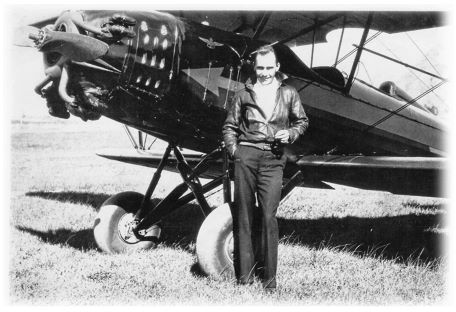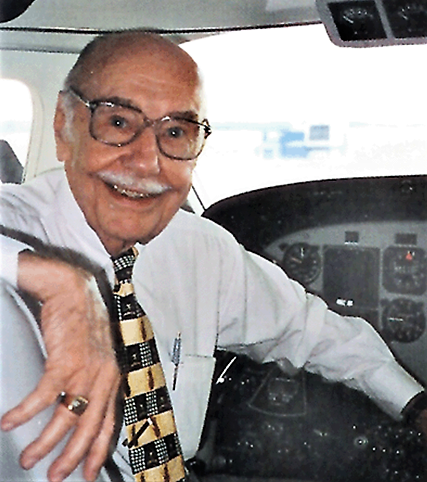
For much of its history, the university’s grounds were neglected by lawmakers in Annapolis. Today, however, alumni marvel at the beauty of the UMES campus. In a contest judged by a national landscapers’ organization at the turn of the 21st century, the Princess Anne campus was rated second only to Duke one year and the University of Michigan another in its aesthetic appeal. Much of the credit for the stunning transformation of the university’s physical appearance goes to Richard A. Henson, who died in 2002.
In the 1980s, the aviation pioneer, businessman and entrepreneur embraced the vision for UMES espoused by Dr. William P. Hytche, it’s top administrator. Henson was so impressed with the quality of the academic offerings he made a $2 million gift to UMES. Yet generations of indifference by the state of Maryland to the university’s infrastructure — its buildings and grounds — also caused him concern.
So, behind closed doors, Henson lobbied then-Gov. William Donald Schaefer for a vigorous state investment in the university’s physical appearance, holding out the carrot of his $2 million gift to the public university. Henson’s persuasive lobbying — and intransigence over the issue – prompted Schaefer to champion a significant capital investment.
* * *
The story of Henson’s professional success began at age 20. Driven by an ambition to fly, he procured a 25 percent interest in a $1,500 biplane as the Great Depression dominated every day life. A year later, he purchased his own airplane and formed the Henson Flying Service in Hagerstown, Md. His company offered plane rides, flight lessons, fuel and service. By 21, he was chief executive officer of his own company.
At the same time, Henson worked at Hagerstown’s Fairchild Aircraft plant and became one of the company’s first test pilots. He progressed from test pilot to director of flight-testing during his 33-year tenure with the company.
During World War II, he was among the first to be granted a contract specifically for training future instructors for the military. Many of these pilots were entering the Navy, so they jokingly called themselves, “Henson’s Ensigns.”

After the war, Henson began service between his hometown and Washington. D.C., on what became known as the “Hagerstown Commuter,” gaining national recognition in 1962. By 1967, “The Hagerstown Commuter” had expanded with such rapidity he initiated a joint arrangement with Allegheny Airlines.
He became one of 12 operators in the United States to initiate scheduled air taxi and commuter service between two or more cities. By 1989, he had built his airlines into the nation’s fourth-largest regional operation, with a route network stretching from Boston to the Bahamas. His concept of commuter aviation became a national model.
Henson Aviation began an experimental commuter service to the Salisbury-Wicomico airport in 1970, and so began a love affair between Dick Henson and the Eastern Shore, a place he eventually called home. Later, he moved his headquarters from Hagerstown to Salisbury.
He sold his company in 1983 to Piedmont Airlines, which opened the door for him to pursue his long-developing interest in community philanthropy.
In 1990, he established the Richard A. Henson Foundation, Inc. to execute his philanthropic objectives. A dreamer and visionary, yet also a staunch realist, he insisted his philosophy of philanthropy be safeguarded and remain unchanged after his passing. Through his foundation, Henson touched the lives of thousands of young people.
Cumulative gifts from Henson and his foundation to UMES at its 125th anniversary total $4.5 million. When federal Title III matching funds are included — money only available due to Henson’s philanthropy – that total balloons to $6 million. UMES Henson Scholars and Leaders have been the beneficiary of his philanthropy for many years, receiving scholarships based on academic accomplishments and financial need.

In 2008, the Richard A. Henson Foundation made a $1.5 million challenge gift to the University of Maryland Eastern Shore Foundation to establish the Henson Entrepreneurs and Scholars Endowment Program. It focuses on producing globally competent, entrepreneurial-minded graduates in business, science, technology, engineering and mathematics disciplines.
Steve Farrow, chairman of the Henson Foundation’s governing board, said, “”With so many deserving causes and institutions in the local area, one of the difficult tasks we face as Richard A. Henson Foundation trustees is deciding how to allocate the Foundation’s resources. However, in the case of UMES, it was an easy decision because of Richard Henson’s strong feelings for and belief in this institution.”
“Over 20 years ago,” Farrow said, “he and Dr. Hytche had a vision of what UMES could be. Mr. Henson gave of his resources and today much of that vision is reality.”
Richard Henson Hall opened in 1993. It houses the hospitality and tourism management and human ecology departments, the university’s Maryland Cooperative Extension department, the Rural Development Center, a 21-room hotel and several conference and meeting rooms. The university also recognized Henson’s transformational and inter-generational generosity by naming the Richard A. Henson Honors Program in his honor.
UMES awarded Henson an honorary degree Sept. 12, 1986. He died June 12, 2002. He was 92.

